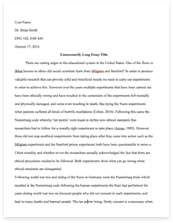Heathcliff

- Pages: 3
- Word count: 695
- Category:
A limited time offer! Get a custom sample essay written according to your requirements urgent 3h delivery guaranteed
Order NowCharlotte Brontë described Heathcliff as a ‘man’s shape animated by demon life – a ghoul” To what extent do you think this is an accurate assessment of the ways in which Heathcliff is presented in the novel?
Heathcliff is presented in this novel in various different ways. He is a character that arguably shifts from having human qualities, to presenting traits of the Byronic hero and finally becoming a typical gothic villain. The doomed central character of Heathcliff in this gothic novel could be paralleled to that of Satan in John Milton’s ‘Paradise Lost’ where Satan is cast out by God from Heaven into the terrible darkness of Hell.
One could argue that Brontë does in fact present Heathcliff as “a ghoul” by making a connection between him and the exotic and describing him from the very start as “dark almost as if [he] came from the devil” showing that his striking physical appearance, just like the Byronic hero, makes him unable to integrate into a higher social class. In an attempt to confine and dehumanize Heathcliff, Hindley forces him into servitude; although Heathcliff endures it, he plots how he can “paint the house-front with Hindley’s blood”. His cruelty serves to conceal the heart of a romantic hero and the fact that Heathcliff is subject to xenophobia which was a common sentiment among the British people in the colonial days of the early nineteenth century leads him to become an outcast and makes him a “child of the storm”, someone product of circumstances and a man distrustful of everybody and unable to engage in any social relations. Young Heathcliff shows a strong will to improve his station in life, but his unfortunate background and his repeated frustrations turn his nature into a devilish one.
Moreover, his relationship with Catherine leads to their own fatal destruction and this suffering turns Heathcliff into a damned hero. Once Catherine is dead, he loses all aims in his life and like the Byronic lover, he does not allow himself to find a happy ending, instead he lives the rest of his days with guilt and perpetual torment. His passionate nature leads to an intolerable frustration that makes him lose his humanity.
Heathcliff is presented as an evil man and the typical Gothic villain displaying no human feelings with his cruel treatment of Catherine and Isabella. Even Cathy whom he calls “my love, my life, and my soul” accuses him of being her murderer (“you have killed me – and thriven on it”) showing the gothic hero’s mystical power to triumph over women’s will and conscience by resorting to his dark demonic appeal as well as showing his ‘otherness’ by the fact that he can love to a great degree but can also inflict pain and suffering, typical features of a gothic hero. Furthermore Isabella asks “Is Mr.Heathcliff a man? … And if not, is he a devil?” Isabella’s questions reflect Heathcliff’s abnormity caused by his drive for revenge. He is depicted in a monstrous way even though he manages to make enormous fortune and he is synonymous of “demon” throughout the course of the novel as he is capable of inflicting brutal behaviour towards his wife and his lover.
He could also be seen as neither a man nor a ghoul but a way in which Brontë uses him as a social commentary. Heathcliff, like the Byronic hero might represent an attack and the refusal on the established norms and values of Victorian society. Moreover, Heathcliff as a supernatural presence, that is “a ghoul” has been challenged by the fact that his love for Catherine and all the emotions that follow show the concerns of a genuine human heart. Therefore, Heathcliff could be regarded as the result of a fusion of two types of “otherness” the human and the inhumane.
In conclusion, the prejudice he endures is what makes him a “demon” and “a ghoul”. From his rejection since childhood he learns that the only way to survive is to emulate it. His behaviour is conditioned by other people and therefore he becomes a “gothic villain” as at first he is portrayed as the victim and his desire for “revenge” turn him into a “demon”.










